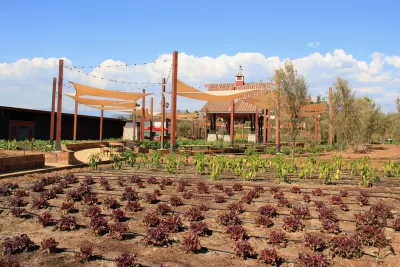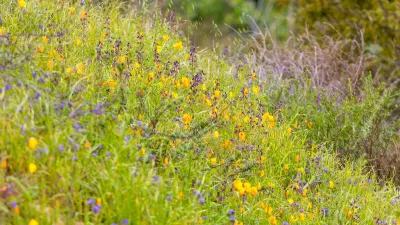Los Angeles created a tax incentive to promote urban farms on the thousands of vacant lots around the city. So far, the incentive has been given out only four times.

Urban Agriculture Incentive Zones (UAIZ) is an incentive program meant to turn unused lots into urban farms. The idea was to pay property owners to allow their lots to produce food. "The reality has been different: So far, only four lots have received a tax break under the program," Ludwig Hurtado reports for CityLab.
"The UAIZ program allows owners of plots of up to three acres to claim a property-tax reduction if they use or lease the land for agricultural purposes for a minimum of five years," Hurtado explains. Some see this as part of the problem a five- year lease is a long commitment to property owners that may want to take advantage of changing property markets. "Landowners have the option of ending their contract whenever they wish, but state law requires them to pay back the amount they’ve received in tax benefits, unless their municipality determines that the cancellation was “caused by extenuating circumstances despite the good faith effort by the landowner,” as the code states," Hurtado reports.
Others say the city hasn't done enough to promote the program and explain it to those that might wish to participate. Still, time is not up on the program, it's original legislation slated it to phase out in 2019 it has since been extended to 2029. Whether or not it will become popular in the intervening time remains to be seen.
FULL STORY: L.A.’s Incentive for Urban Farming Fails to Take Root

Study: Maui’s Plan to Convert Vacation Rentals to Long-Term Housing Could Cause Nearly $1 Billion Economic Loss
The plan would reduce visitor accommodation by 25,% resulting in 1,900 jobs lost.

North Texas Transit Leaders Tout Benefits of TOD for Growing Region
At a summit focused on transit-oriented development, policymakers discussed how North Texas’ expanded light rail system can serve as a tool for economic growth.

Why Should We Subsidize Public Transportation?
Many public transit agencies face financial stress due to rising costs, declining fare revenue, and declining subsidies. Transit advocates must provide a strong business case for increasing public transit funding.

How to Make US Trains Faster
Changes to boarding platforms and a switch to electric trains could improve U.S. passenger rail service without the added cost of high-speed rail.

Columbia’s Revitalized ‘Loop’ Is a Hub for Local Entrepreneurs
A focus on small businesses is helping a commercial corridor in Columbia, Missouri thrive.

Invasive Insect Threatens Minnesota’s Ash Forests
The Emerald Ash Borer is a rapidly spreading invasive pest threatening Minnesota’s ash trees, and homeowners are encouraged to plant diverse replacement species, avoid moving ash firewood, and monitor for signs of infestation.
Urban Design for Planners 1: Software Tools
This six-course series explores essential urban design concepts using open source software and equips planners with the tools they need to participate fully in the urban design process.
Planning for Universal Design
Learn the tools for implementing Universal Design in planning regulations.
City of Santa Clarita
Ascent Environmental
Institute for Housing and Urban Development Studies (IHS)
City of Grandview
Harvard GSD Executive Education
Toledo-Lucas County Plan Commissions
Salt Lake City
NYU Wagner Graduate School of Public Service




























